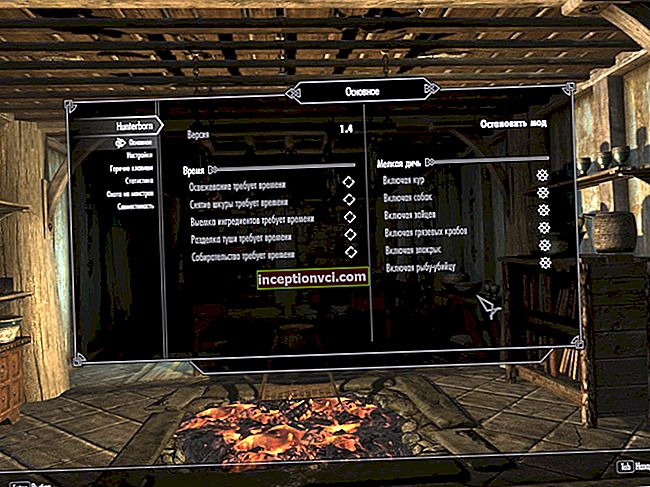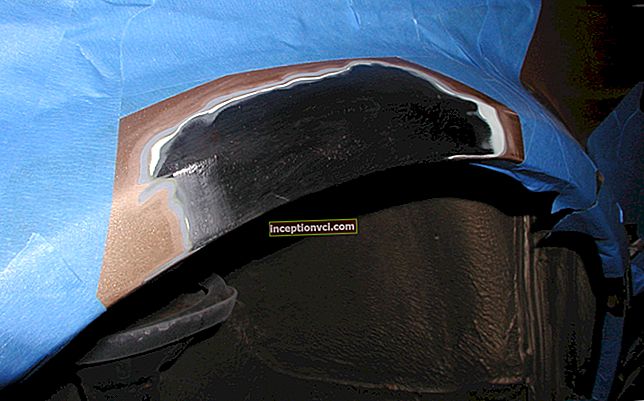Adobe Photoshop CS6 beta overview
In early 2012, Adobe released a beta version of its public flagship bitmap product called Photoshop CS6. Let's take a look at what improvements are in store for the photographer.

The first to notice are the new interface schemes. Perhaps it will seem to someone that these are just decorations, but for this kind of work it is really better when there are dark gray shades in the design. Moreover, the user can choose one of four options. The company also announces that the icons and cursors have been redrawn. Fortunately, the changes are minor and shouldn't significantly affect the photographer's day-to-day work. In contrast, the horizontal panels are slightly thinner, which saves vertical pixels on widescreen displays.

A useful innovation is visible to the naked eye, referred to as "rich cursors". Its essence lies in the fact that a panel with information about the size of the area and other necessary data pops up next to the cursor. A similar solution (InDesign layout) was used in previous versions of Photoshop and its presence in the new version of the program cannot but please us.
There are plenty of small improvements. Some of them (for example, the Crop tool) are very nice - Photoshop automatically draws a cropping frame around the photo. If the files are large, but you need to cut a small fragment in the middle, then in the settings there is an opportunity to return the previous method. It all depends on user habits and editing style.
Adobe developers have added a feature to automatically save documents. A trifle, but nice, especially against the background of the stable functioning of operating systems and the software product itself. Testing this function turned out to be a difficult process for me due to the lack of precedents for restoring a document after a program freeze, but this is for the best.
The main improvement for photographers is the Camera RAW 7 module, which is familiar to Lightroom 4 users.

Another useful innovation is the Adaptive Wide Angle filter, designed to process photographs taken with ultra-wide and wide-angle lenses. It allows you to correct geometry by manually aligning vertical and horizontal lines, while the rest of the image is slightly deformed. In addition to manual settings, there are automatic ones that are based on EXIF information.
The properties of masks and adjustment layers in CS6 are displayed in the Properties panel (previously absent). It's difficult to call this an improvement, but it will save a lot of time, since switching, for example, between curves and a mask is much faster. The size of the Curves window began to change not discretely (small-large), as before, but in a series of iterations. Although it is still not possible to increase it significantly, as in Apple Aperture.
The built-in Content Aware Move tool aims to amaze in presentations: it does virtually the same thing that could have been done back in CS4, albeit manually. Moving an object around the frame is a very useful thing, but in automatic mode the end result is not always acceptable. However, according to the rule of the golden ratio, it has become much easier to place a bird in a blue sky. In this regard, the new Photoshop honestly deserves a little thanks.
The dominance of cameras with a small matrix and low-aperture optics is forcing software manufacturers to come up with filters designed to simulate background blur. Adobe previously had a similar tool (Lens Blur), but in CS6 we can find another one - Blur Gallery. It cannot be called successful.Therefore, if you really need to work with background blurring, you will have to carefully draw masks and use third-party products.

It is very strange to use expensive and complex Photoshop to perform automated operations, for example, to quickly "fix" images. Even free programs designed for viewing pictures are able to cope with this task quite well.
However, Adobe is trying to flirt by offering surrogate solutions to newbies. A striking example is the ability to set up automatic correction for Levels and Curves. A beginner simply won't see the difference between improved monochromatic contrast and auto-correction of contrast and brightness, and for advanced users crutches in the form of “Auto” commands are wild.

During beta testing, it seemed to me that CS6 was significantly faster than the previous version. To confirm this, the following combination of actions was performed: an Action was recorded from a set of operations, then saved in one version and loaded into another version of Photoshop. The operation was performed on one file, while the elapsed time was recorded. Naturally, the configuration of the computer and the entire working environment were the same. The result showed that the new Photoshop is better, but the difference is far from revolutionary, but rather evolutionary. Naturally, a lot depends on the tools used (the channels were sharpened, simple blurring was done, vignetting was added using the Lens Correction filter, the image was rotated and cropped, and HDR toning was applied). It is possible that a different set would have shown the results more clearly, but the recorded speed increase of 10%, although a trifle, is pleasant.
Outcome
This begs the question as to the advisability of switching to CS6 when it appears on the free market. The answer to it is far from straightforward. If you are shooting in RAW and are not using Lightroom, then it is advisable to buy the new version, since ACR 7 allows you to improve the processing of RAW files. No official information has been received from Adobe about the availability or non-availability of PW2012 and ACR 7 for CS5 users.
The Adaptive Wide Angle tool is also very useful, but not everyone needs it.
From a practical point of view, the information around the cursor and the beautiful interface are clearly not worth the amount of money that the developers of the new version of Adobe are asking for an update.









